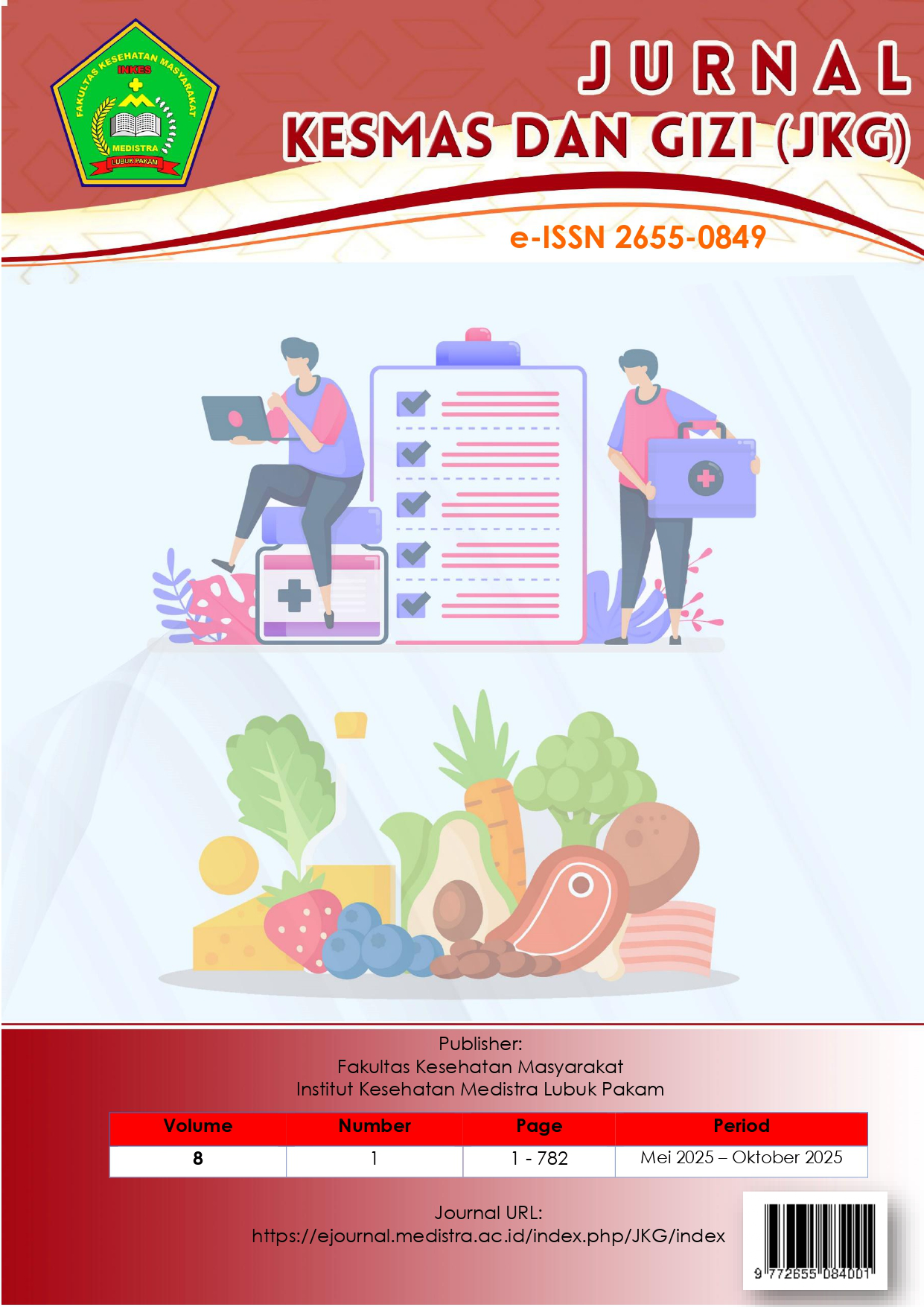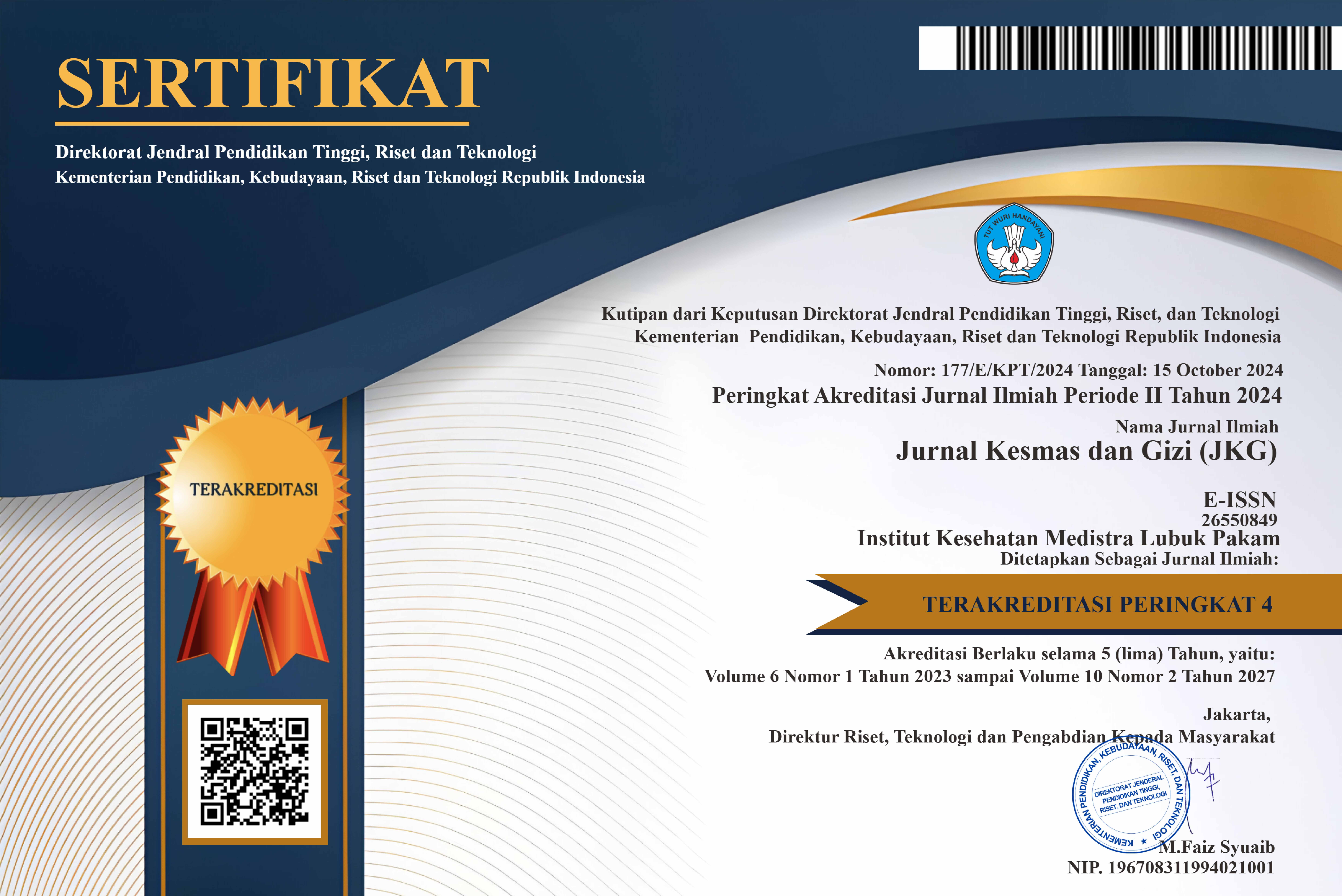Evaluation of Risk Management Implementation in the Radiotherapy Unit of Grandmed Hospital, Lubuk Pakam, in 2023
DOI:
https://doi.org/10.35451/8497ft42Keywords:
risk management , radiotherapy, patient safety, Grandmed Hospital, radiationAbstract
Radiotherapy installations are among the high-risk healthcare service units due to the use of ionizing radiation in cancer treatment. Evaluating the implementation of risk management is essential to ensure the safety of patients, healthcare workers, and the surrounding environment. This study aims to evaluate the extent to which risk management has been implemented in the Radiotherapy Installation at Grandmed Hospital Lubuk Pakam in 2023. A descriptive qualitative method was used through observations, interviews with healthcare personnel, and document analysis of standard operating procedures (SOPs) and incident reports. The results of the study indicate that risk management practices have been implemented, but not yet optimally, particularly in aspects such as incident reporting and regular training. Strengthening the reporting system, continuous training, and internal audits are necessary to improve the effectiveness of risk management in the facility.This study employed a descriptive approach using qualitative methods. Data were collected through in-depth interviews with radiotherapy unit staff, direct observations, and document reviews related to the risk management system. The evaluation was conducted based on the ISO 31000 risk management standard and guidelines from the Nuclear Energy Regulatory Agency (BAPETEN).The evaluation results indicated that most hospitals have implemented the basic components of risk management, such as hazard identification, risk analysis, and risk control. However, it was found that the processes of risk monitoring and evaluation have not been carried out systematically. In addition, not all installations had complete risk documentation or conducted regular training updates.The implementation of risk management in radiotherapy installations is at a promising early stage, but improvements are still needed, particularly in the areas of documentation and the strengthening of safety culture. Strong management commitment and ongoing training are essential to enhance the effectiveness of the risk management system to ensure the safety of both patients and medical personnel
Downloads
References
[1] Kementerian Kesehatan Republik Indonesia. (2020). Panduan Manajemen Risiko di Rumah Sakit. Jakarta: Direktorat Mutu Pelayanan Kesehatan.[Pedoman resmi dari pemerintah Indonesia mengenai manajemen risiko di fasilitas pelayanan kesehatan.]
[2] Radiological Society of North America. (2021). Radiation Safety in Medical Imaging and Therapy: Best Practices and Recommendations. RSNA Journal.
[3] World Health Organization. (2019). Patient Safety: Global Action on Patient Safety. Geneva: WHO.
[Laporan WHO mengenai pentingnya keselamatan pasien, termasuk dalam konteks penggunaan radiasi.]
[4] Nugroho, A., & Permana, Y. (2022). Evaluasi Sistem Manajemen Risiko di Instalasi Radioterapi Rumah Sakit Rujukan. Jurnal Keselamatan dan Kesehatan Kerja (JKKK), 11(2), 85–93.
[5] International Organization for Standardization. (2018). ISO 31000:2018 – Risk management — Guidelines. Geneva: ISO.[Standar internasional tentang manajemen risiko yang menjadi acuan utama dalam penelitian ini.]
[6] Badan Pengawas Tenaga Nuklir (BAPETEN). (2017). Peraturan BAPETEN No. 8 Tahun 2011 tentang Keselamatan Radiasi dalam Penggunaan Kedokteran. Jakarta: BAPETEN.
[7] International Atomic Energy Agency (IAEA). (2016). Radiation Protection and Safety of Radiation Sources: International Basic Safety Standards (IAEA Safety Standards Series No. GSR Part 3). Vienna: IAEA.
[8] Sutrisno, A., & Dewi, R. K. (2020). Evaluasi Implementasi Manajemen Risiko di Rumah Sakit Umum Daerah. Jurnal Administrasi Kesehatan Indonesia, 8(2), 95–102.
[9] Siregar, F., & Nasution, R. A. (2022). Penerapan Sistem Pelaporan Insiden Keselamatan Pasien di Instalasi Radioterapi. Jurnal Keselamatan Radiasi dan Lingkungan, 5(1), 44–50.
Downloads
Published
Issue
Section
License
Copyright (c) 2025 Bambang Sumantri

This work is licensed under a Creative Commons Attribution 4.0 International License.
Copyright in each article is the property of the Author.


























